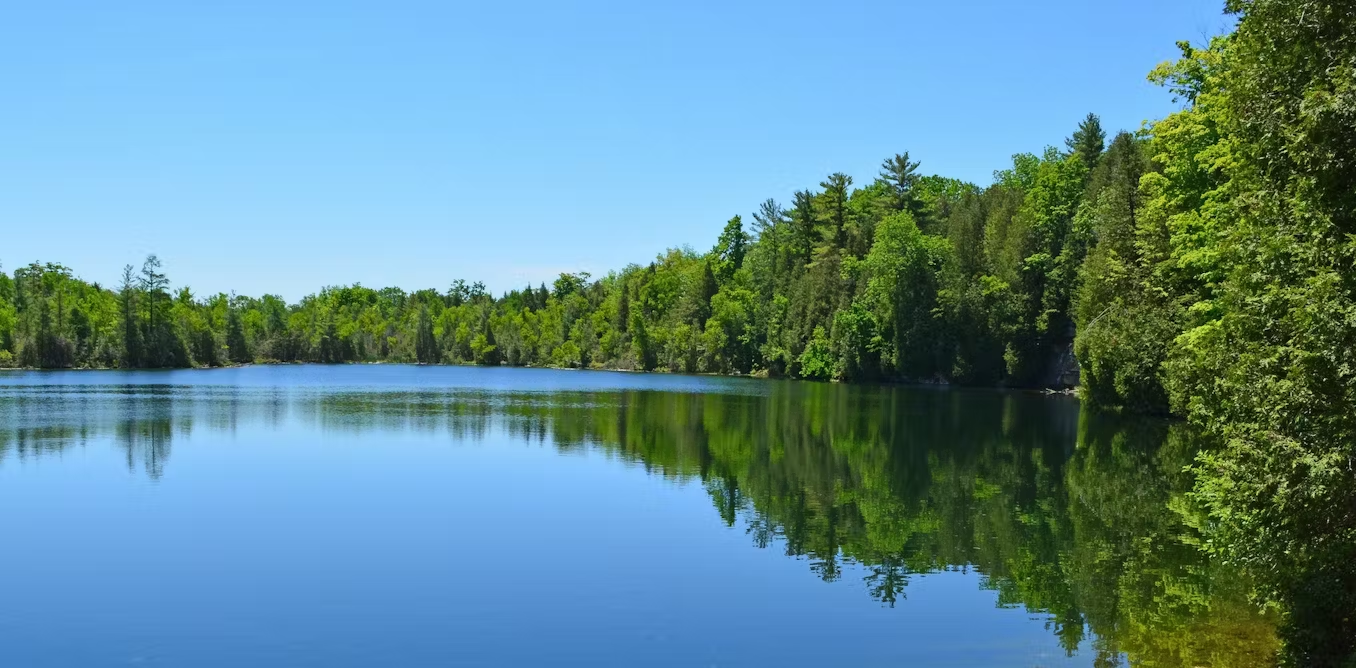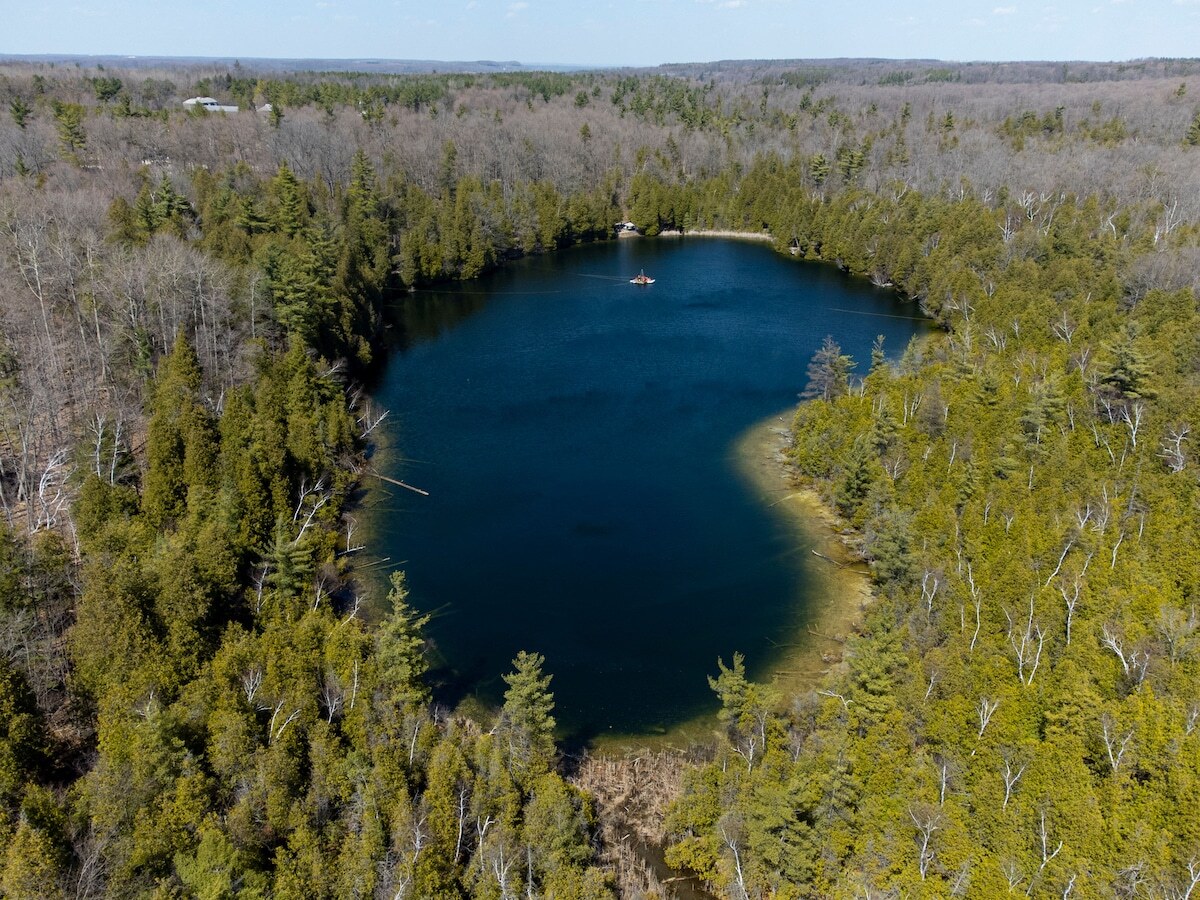A modest lake in a Canadian suburb might soon become a significant marker in Earth’s official history, potentially signaling the beginning of the Anthropocene, or the age of humans.
On Tuesday, scientists revealed that Crawford Lake in Milton, Ontario, holds compelling evidence of humanity’s profound impact on the planet.
The lake’s layers of sediment provide a detailed environmental record spanning a thousand years, showing a dramatic shift in the mid-20th century.
This period is characterized by human activities such as nuclear weapons tests, fossil fuel use, deforestation, and global trade, which began to significantly alter Earth’s geological record.
This announcement represents a key milestone in the prolonged effort to determine if human activities have sufficiently altered the planet to warrant the designation of a new geological epoch.
Since 2009, the Anthropocene Working Group, an obscure scientific body, has gathered evidence indicating that Earth’s chemistry and climate have changed fundamentally from the conditions of the past several thousand years.
The final step is to identify a “golden spike”—a location in the geologic record that clearly marks this transformative period.
Francine McCarthy, a professor of Earth sciences at Brock University in Ontario and leader of the working group’s research on Crawford Lake, emphasized that the lake illustrates how the Earth’s systems and their interactions have fundamentally changed.
“We felt it was the best place to illustrate this existential issue,” McCarthy said.
At the International Congress on Stratigraphy, a conference for researchers studying Earth’s historical phases, working group members recommended establishing the Anthropocene as a new epoch starting in 1950, with Crawford Lake serving as its golden spike.
Before the Anthropocene can be officially added to Earth’s 4.6-billion-year timeline, it must be reviewed by the broader geology community.
The proposal will next be examined by the Subcommission on Quaternary Stratigraphy, which oversees the subdivision of the last 2.4 million years of Earth’s history.
Subsequently, the International Commission on Stratigraphy will vote on the proposal. If it passes these reviews, the proposal will be ratified next year at the International Geological Congress in South Korea.
Crawford Lake was chosen from 12 global candidates for the golden spike designation, which included sites such as Antarctic ice, remote coral reefs, a mountaintop peat bog, and a polluted bay in California.
Each location provided evidence of the same surge in human-induced pollution around 1950, with radioactive plutonium from nuclear testing serving as a primary marker for the Anthropocene.

Colin Waters, a geologist at the University of Leicester and chair of the Anthropocene Working Group, noted that Crawford Lake provided the most comprehensive evidence for the Anthropocene.
Beyond nuclear fallout, the lake’s sediments reveal signs of industrial pollution, species extinctions, and climate change.
For example, tiny black particles known as fly-ash, a byproduct of fossil fuel combustion, are present throughout the sediments, and changes in buried tree pollen indicate how local forests have responded to rising temperatures.
Jürgen Renn, director of the Max Planck Institute for the History of Science in Berlin, which supported the working group’s research, highlighted the need to address the various interconnected effects of human activities. “We have to understand and adapt our societies accordingly,” he said.
However, not all scientists agree on the Anthropocene’s place in the geologic time scale. Critics argue that epochs are traditionally defined by environmental changes recorded in rocks, tree rings, and ice, rather than by recent instrumental data.
For instance, the end of the age of dinosaurs is marked by a meteor impact recorded in a Tunisian cliff, while the Holocene epoch is defined by hydrogen molecules trapped in ancient Greenland ice.
Archaeologist Sturt Manning from Cornell University expressed skepticism about defining a new geological age based on recent decades. “You can’t really define your own time,” he said.
Other researchers worry that defining the Anthropocene as a geological epoch could have broader implications beyond academia. Andrew Bauer, an anthropologist at Stanford University, cautioned that the designation might oversimplify the extent of human responsibility and could downplay impacts before the mid-20th century.
He also noted that the term “Anthropocene” might unfairly imply equal responsibility among all people, when in reality, wealthier nations and individuals contribute more significantly to environmental harm.
Simon Turner, an environmental scientist at University College London and secretary of the Anthropocene Working Group, acknowledged the significance of the proposed Anthropocene epoch.
He stressed that the evidence from Crawford Lake and other studied sites is “undeniable” and continues to strengthen each year. As long as human activities cause environmental damage, these effects will be recorded in the Earth’s geological record.
Even if the Anthropocene is not formally added to the geologic time scale, McCarthy hopes that the findings from Crawford Lake will encourage a greater focus on climate change, biodiversity loss, and other environmental issues.
“It will at the very least have been an effort to quantify and communicate how quickly and irrevocably our actions can alter significant aspects of the planet,” she said.







Leave a Reply